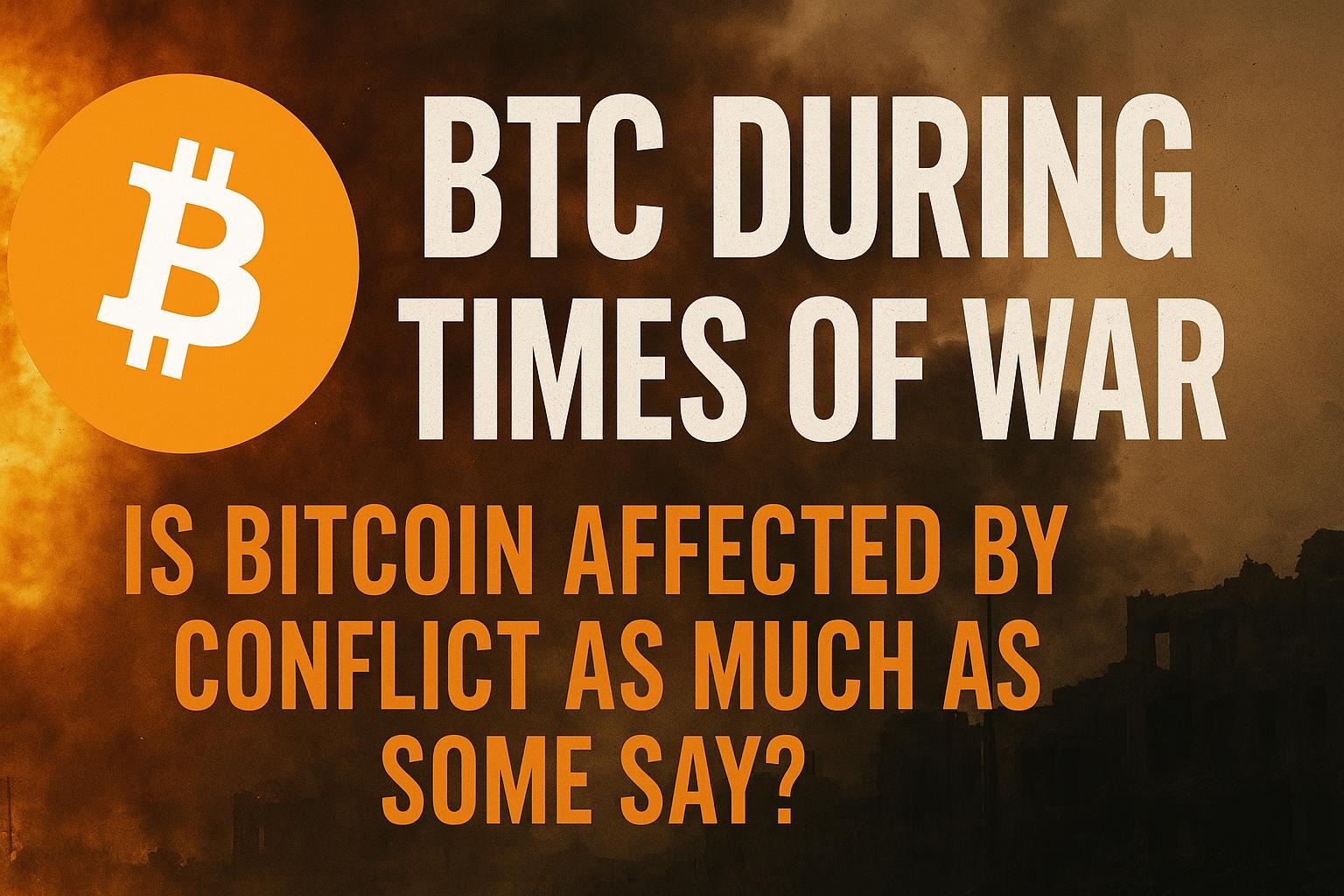Surprisingly, BTC has proven fairly resistant to the outbreak of wars and conflicts over the past 10 years. While some expected massive drops in price due to geopolitical instability, the data shows that Bitcoin tends to hold strong—even during times of global tension.
That’s not to say that BTC is immune. At the outbreak of certain conflicts, we do see spikes in volatility or sudden price fluctuations. In this brief article, we’ll look at various conflicts and their short- and long-term effects on Bitcoin’s behavior.
Starting off with one of the most significant global conflicts in recent history—the Russia-Ukraine War, which began in February 2022 and is still ongoing. When the war broke out, BTC actually surged 16%, catching many by surprise. That spike normalized within a few weeks, and since then, Bitcoin has been largely unaffected by changes or news surrounding the conflict. This is particularly noteworthy given that this is the largest war in Europe since World War II. One might assume that such a massive event would rattle the crypto markets, but BTC has remained steady over the past three years.
Looking at more recent developments, the Israel–Iran direct conflict has shown us how BTC responds to high-stakes escalation. In April 2024, when tensions flared, Bitcoin experienced some intraday volatility of around ±3%. Fast forward to June 13, 2025, when Israel launched a bombing campaign against Iranian military targets—Bitcoin saw a minor dip below the $100,000 mark. But once again, it rebounded quickly.
Just days later, on June 22, 2025, the United States got involved, targeting three Iranian nuclear facilities in an operation dubbed “Midnight Hammer.” This caused a 1–3% drop in BTC’s value, briefly pushing it below the $100k line. However, within 48 hours, the price had bounced back after former President Trump issued a public call for a ceasefire.
It’s also worth noting that this strike impacted Bitcoin’s hashrate. With the loss of Iran’s nuclear facilities and the subsequent shutdown of their BTC miners, global hashrate dropped by 8%. Even so, the Bitcoin network remained robust—demonstrating that even when dramatic geopolitical events affect infrastructure, the Bitcoin ecosystem holds strong.
Outside of these two headline conflicts, there are several others worth mentioning, though they had little to no impact on Bitcoin’s price. These include the Saudi-led intervention in Yemen (March 2015), the Tigray War in Ethiopia (November 2020), the Israel–Palestine conflict (May 2021), the Israel–Hamas War (October 2023), and the India–Pakistan skirmish (May 2025). In all of these cases, BTC showed minimal—if any—response.

To wrap up: Bitcoin does tend to dip immediately after the outbreak of war, but these drops are usually shallow and short-lived. Rebounds often come quickly, tied to easing geopolitical tensions or shifts in macro sentiment. Bitcoin’s role as a modern store-of-value is still developing. At times, it acts like a safe haven. At others, it behaves more like a speculative asset. The truth is probably somewhere in the middle.




